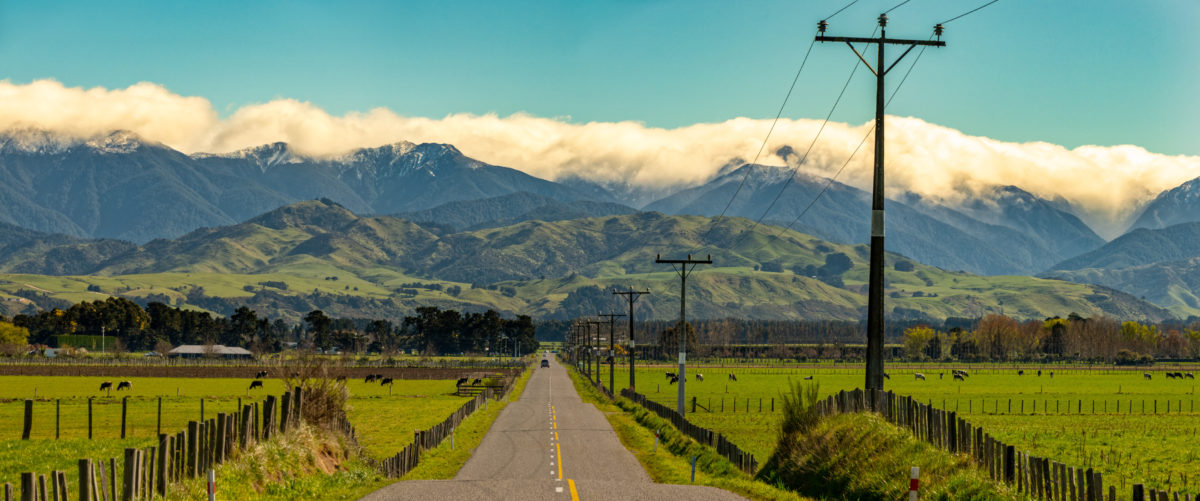This article has been reproduced from the Point of Order blog…
In a week when the Ardern government achieved one of the biggest stumbles of the modern era, with its backdown over the KiwiSaver GST move, it did record one positive outcome with a $26m research programme to prove to the world why New Zealand food and fibre should be always the number one choice.
That was the drum Agriculture Minister Damien O’Connor was beating, showing again he is one of the few Cabinet Ministers who gets a pass mark in his field.
In an era when climate change warriors are casting doubt on New Zealand’s farming industries, and calling for the nation’s dairy herd to be culled, O’Connor says he wants to enable farmers to make informed decisions on the financial and environmental benefits of adopting regenerative farming practices.
He said:
“The Government is backing a new $26.1m programme to undertake the most comprehensive study of pastoral farming in New Zealand.”
He contends — with powerful trade data to support him – that our economic security depends on the primary sector, which this year earned us a record $53.3bn in exports.
When he says NZ’s future competitive edge in food and fibre will depend on demonstrating sustainability credentials to ever more discerning consumers, he might find not everybody agrees. The pendulum nevertheless appears to be swinging in that direction.
O’Connor says the new Whenua Haumanu programme will study the whole pastoral farming system from field to fork.
“It will scientifically build a picture that includes soil biodiversity, pasture performance, animal production and welfare, and the quality of the food produced.”
Here comes the important bit: Whenua Haumanu is being led by Massey University’s School of Agriculture and Environment to enable farmers to make informed decisions on the financial and environmental benefits of adopting regenerative farming practices.
“We’re committing $17.6m over seven years through the Ministry for Primary Industries’ Sustainable Food and Fibre Futures (SFF Futures) to fund this partnership,” O’Connor said.
The programme will involve several research sites and bring together universities, Crown research institutes, and industry groups.
Research partners include AgResearch, Lincoln University and Dairy Trust Taranaki. Additional guidance will be provided by an End User Advisory Group comprised of the pastoral industry, iwi, investment and consumer groups.
The minister notes that this is the most comprehensive study ever undertaken of our pastoral systems, both conventional and those incorporating regenerative farming practices.
“Whenua Haumanu will be part of broader coordinated work that the government is backing to provide a robust evidence base to explore regenerative farming practices alongside conventional pastoral practices in both dairy cow (cattle) and sheep systems. In doing so it will also test claims that many of our conventional pastoral practices are already regenerative.
“One key aim of the programme is to investigate potential benefits of diverse pastures for grazing animals, as well as regenerative farming practices, as these have yet to be thoroughly studied for the New Zealand farming context.”
O’Connor said establishing an evidence base of regenerative practices is a cornerstone of the sustainability goal in the government and food and fibre sector’s Fit for a Better World roadmap.
“Through SFF Futures we are co-investing with others in 11 research projects across the country that are evaluating regenerative farming practices. These amount to a total investment of $54.74m from government and investment partners, and further research proposals are being assessed by the Ministry for Primary Industries.
“Developing a sound evidence base for what works well with our soils, climates, and farming systems will aid our efforts to transition to a more sustainable future for our food and fibre sector.
“Purchasing decisions by consumers in our export markets are increasingly being driven by their values. The work by Whenua Haumanu will help NZ tell the story of its food production so we can grow exports and deliver economic security.”
The research sites will include:
- Massey University’s Dairy 1 farm grazed by lactating dairy cows;
- Massey University’s Pasture and Crop Research Unit (PCRU) grazed by sheep;
- Lincoln University’s Field Research Centre (FRC) grazed by sheep;
- Additional monitoring sites are planned on some Pāmu farms and pastoral industry demonstration farms.
While this sounds highly worthy, an investment of that magnitude should not be accepted uncritically simply because it is being pumped into research.
For starters, no one seems to be able to come up with a precise definition of what “regenerative agriculture” is, so our ability to measure tangible outcomes from this sizeable investment (and there are some credible scientists involved), might be rather limited.
That said, it needs to be acknowledged that “regenerative agriculture” is a marketing consultant’s dream, exuding an immense feel-good factor because it is so easy to assume that “conventional agriculture” by definition is “degenerative agriculture”.
But there is no clear definition of “conventional agriculture” either, not least because from year to year productivity by most measures is increasing, which means we are already bloody good at what we do and getting better day by day and the environmental impact is decreasing (thanks to the success of the clean streams accord and so on.
This suggests “conventional” is working just fine, thank you very much.
Another thought: is this a further example of a political charade that may or may not produce a tangible benefit, but that is likely to be well received by the team of five million because by the time we get to the notional goal post everyone has moved on to the next fad?
Source: Point of Order












